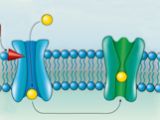Chili peppers can send you to hell and maybe back (we don't know for sure?), but even so, what causes sufferance can also bring relief. Capsaicin, the 'hell-inducing' chemical from the jalape?os and haba?eros is already a main ingredient in a balm for stiff joints and arthritis.
A new study reveals how this chemical's special affinity for pain-sensing neurons could be used for opening minute channels on their surfaces for an anesthetic to enter the cell, without causing the unwanted numbness or temporary paralysis.
This occurs because local anesthetics usually tap sodium channels, hollow proteins on the surface of neurons that allow ions to enter the cells, generating the nerve electrical impulses. But unselective blocking turns off nerves transmitting touch information and movement orders. This makes you go out of the dentist's office drooling, unable to speech and feel your tongue/mouth.
Neuroscientist Bruce Bean at Harvard Medical School focused on capsaicin during his recent researchers, which attaches to and opens TRPV-1 channels located on the pain-sensitive neurons, allowing positively charged ions to enter the neuron and trigger an impulse. Bean observed that the hole of the TRPV-1 channel was extremely wide, permitting an anesthetic drug to pass through. His team tested this in mice with the drug named QX-314. This anesthetic blocks sodium channels, but it has to enter the cell to do this. QX-314 injected alone near the sciatic nerve induced the same effect as in untreated mice to pain stimuli applied to a hind limb.
But a QX-314 injection followed by a capsaicin one induced an analgesic effect of around 90 minutes in mice. But the double injection did not paralyze the hind limb, as lidocaine injections, a common local anesthetic.
"The approach could ultimately be useful when doctors want to block pain without causing generalized numbness or preventing movement. The one that comes to mind immediately is childbirth," said Bean.
But "there's no guarantee that the method will work well in people. One question is whether the QX-314 injection would sufficiently blunt the burning pain of capsaicin." said David Julius, a neurophysiologist at the University of California, San Francisco.
The team is going to research other anesthetics that could be even more effective than QX-314.

 14 DAY TRIAL //
14 DAY TRIAL // 
